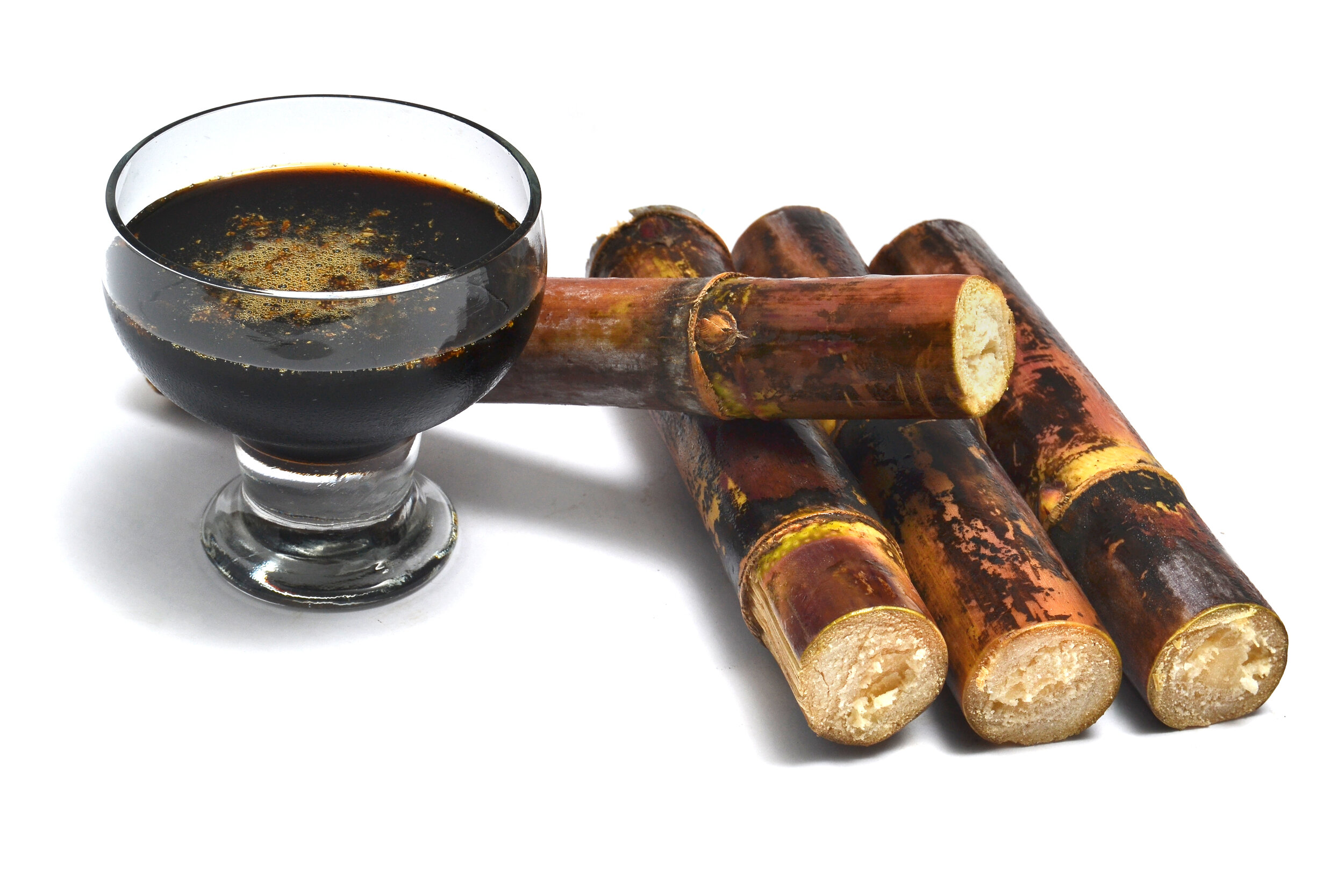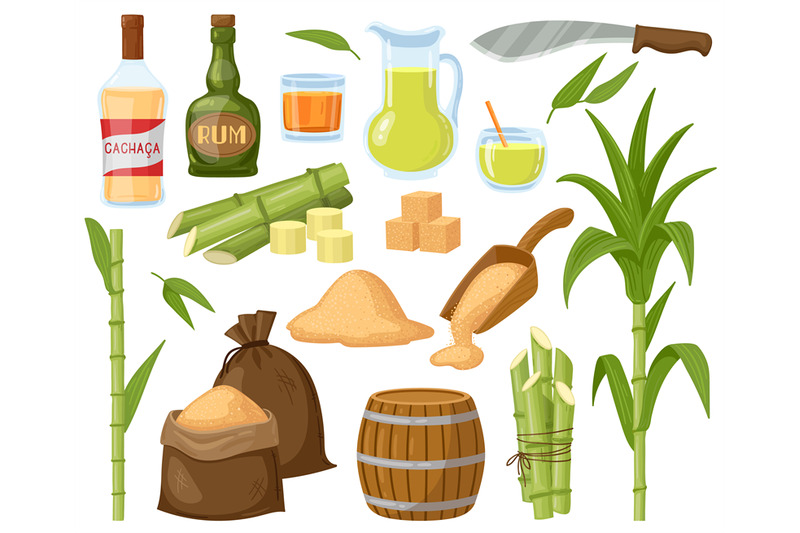Why sugar cane products Matter in the Push for Sustainability
The Comprehensive Trip of Sugar Cane: Understanding Products and Production Techniques
The trip of sugar walking stick is a complex process that starts in tropical regions with ideal growing problems. Growing techniques are created to optimize yield and sustainability. Harvesting techniques range from conventional hands-on methods to contemporary mechanical approaches. After harvest, sugar walking cane undergoes various handling stages to change it into granulated sugar. This expedition exposes not only the intricacies of production however additionally the broader ramifications for worldwide markets and the atmosphere. What exists past this first makeover?

The History of Sugar Cane Cultivation
Although sugar walking stick cultivation go back thousands of years, its origins can be traced to the tropical regions of Southeast Asia, where very early farmers initially acknowledged the plant's sweet sap. This exploration caused the farming of sugar walking stick as a staple plant, progressively spreading out to India and the Middle East. By the very first millennium AD, sugar cane was being cultivated in these regions, where methods for removing and fine-tuning sugar were developed.The plant gained prestige in Europe throughout the Campaigns, as returning soldiers brought expertise of sugar production back home. By the 15th century, the establishment of sugar plantations began in the Caribbean, driven by the need for sugar in Europe. The transatlantic slave labor sustained this growth, as oppressed labor was used to maximize production. Over centuries, sugar walking stick cultivation evolved, affecting economic climates and societies worldwide, making it a significant farming commodity.
Expanding Conditions and Agricultural Practices
The effective growing of sugar walking stick depends heavily on details expanding problems and agricultural techniques. Perfect temperature levels vary in between 20 to 32 degrees Celsius, with well-distributed rains of 1,500 to 2,500 millimeters annually. Dirt top quality is necessary; fertile or sandy soils, rich in raw material, promote healthy growth.Farmers usually utilize different agricultural practices to improve yield. Crop rotation and intercropping prevail approaches to maintain soil fertility and control pests. Normal irrigation might be needed in drier areas, making sure that the plants receive sufficient wetness. Fertilization, particularly with nitrogen and potassium, is crucial for durable growth.Pest and weed management techniques, consisting of integrated insect management (IPM), aid to lessen losses. Lasting techniques, such as very little tillage and chemical-free farming, are acquiring traction amongst producers to secure the environment. Jointly, these elements add significantly to the effective production of sugar walking stick.
Harvesting Methods and Timing
In sugar cane production, the option in between handbook and mechanical harvesting substantially impacts effectiveness and yield. Timing is likewise critical, as harvesting at the optimal moment assurances maximum sugar web content and reduces losses. Recognizing these aspects is vital for successful sugar walking stick farming.
Handbook vs. Mechanical Harvesting
Collecting sugar cane includes two primary techniques: handbook and mechanical, each with distinctive advantages and challenges. Manual harvesting, commonly done by workers utilizing machetes, permits for higher accuracy in cutting and lowers damage to the plant. It is usually favored in areas with unequal surface or where the crop is intermixed with various other plants, as workers can navigate these complexities much more successfully. It is labor-intensive and lengthy. On the other hand, mechanical harvesting uses specialized equipments to cut and collect the walking stick swiftly, enhancing performance and reducing labor costs. This technique is matched for large-scale operations but can cause greater plant damage and soil compaction. Eventually, the option in between guidebook and mechanical harvesting relies on different factors, consisting of financial considerations and environmental conditions.
Ideal Collecting Timing
Picking the ideal minute to harvest sugar walking stick greatly impacts both return and quality. Perfect harvesting typically happens when the cane gets to complete maturation, typically in between 12 to 18 months after growing. At this stage, sucrose levels peak, guaranteeing the very best sugar removal rates. Climate condition additionally play a crucial role; collecting during dry periods can prevent damage to the walking cane and decrease dirt compaction. Furthermore, checking the plant's shade and leaf decline can suggest preparedness, as a yellowing of the fallen leaves suggests that the cane is ripe. Timely harvesting is crucial, as hold-ups can lead to reduced sugar content and enhanced susceptibility to bugs and illness, eventually impacting general production effectiveness.
Processing Techniques: From Cane to Sugar
The processing of sugar walking cane includes crucial extraction techniques that divide the juice from the fibrous plant product. Complying with extraction, the refining procedure transforms the raw juice into crystallized sugar, making certain purity and quality. Recognizing these techniques is important for understanding the trip of sugar from walking cane to end product.
Removal Techniques Summary
Removal techniques play a significant role in transforming sugar walking stick right into functional sugar. The cane is gathered and carried to processing centers where it undertakes complete washing to get rid of pollutants - sugar cane products. The following action involves crushing the walking stick making use of hefty rollers, which releases the juice containing sucrose. This juice is then cleared up with the enhancement of lime and warm, allowing pollutants to settle out. After clarification, the juice is vaporized under controlled temperature levels to focus the sugar material. Subsequently, condensation happens, where sugar crystals are formed as the concentrated Visit Your URL juice cools down. These strategies assure the reliable removal of sugar while keeping the top quality needed for further processing. Understanding these methods is crucial for understanding the general production of sugar from sugar cane
Refining Refine Explained
Refining sugar from the extracted juice is a vital step that improves its pureness and high quality. This process involves a number of stages, starting with information. The juice is heated and treated with lime and other representatives to remove contaminations, resulting in a clearer liquid. Next, the cleared up juice goes through dissipation, where water is gotten rid of to concentrate the sugar material. The focused syrup is then taken shape by cooling down, permitting sugar crystals to form. These crystals are divided from the continuing to be syrup, called molasses, with centrifugation. Finally, the raw sugar is more fine-tuned via washing, purification, and drying, which eliminates any continuing to be contaminations. Completion product is the granulated sugar commonly made use of in households and markets worldwide, guaranteeing uniformity and sweetness.
Lasting Practices in Sugar Cane Production
Although sugar walking stick production has actually traditionally relied upon intensive farming approaches, there is a growing emphasis on lasting practices that advertise environmental health and economic stability. Farmers are increasingly embracing techniques such as plant rotation, which improves soil fertility and reduces parasite infestations. Integrated bug administration (IPM) is additionally gaining grip, enabling all-natural predators to manage pest populations, thereby lessening chemical pesticide use.In enhancement, advancements in watering methods, such as drip irrigation, are being used to preserve water resources. Sustainable land monitoring techniques, including lowered husbandry, assistance stop dirt disintegration and preserve biodiversity. Moreover, several producers are discovering organic farming approaches, which avoid synthetic plant foods and pesticides altogether, fostering a much healthier ecological community.
The International Sugar Market and Economic Effect
Lasting practices in sugar cane production not only profit the setting yet additionally influence the dynamics of the international sugar market. As customer need shifts towards morally generated products, nations embracing sustainable methods obtain affordable advantages. This trend motivates significant sugar exporters, such as Brazil and India, to integrate environment-friendly practices, thereby influencing worldwide pricing and supply chains.Moreover, variations in production as a result of climate change and ecological guidelines can cause volatility in sugar rates, impacting economic climates reliant on sugar exports. For example, areas that buy sustainable farming may experience enhanced yield security, bring about much better market positioning.Economic impacts expand past individual nations, as international profession arrangements and tolls form the affordable landscape. Ultimately, the interaction between sustainable methods and market characteristics emphasizes the value of flexible approaches in a rapidly changing financial environment, influencing both manufacturers and consumers in the worldwide sugar market.
Innovations in Sugar Cane Usage and Results

As the need for sustainable sources grows, developments in sugar walking stick utilization and byproducts are changing the farming landscape. Researchers and entrepreneurs are exploring novel applications that prolong past traditional sugar production. One significant growth is the conversion of bagasse, the fibrous residue left after juice removal, right into bioenergy and bioplastics Your Domain Name (sugar cane products). This not only decreases waste however additionally supplies sustainable power choices for processing facilities.In addition, developments in fermentation innovation have caused the production of biofuels, such as ethanol, from sugar cane, which contributes to cleaner energy remedies. Moreover, the extraction of molasses has actually opened up methods for developing value-added items like animal feed and specialized spirits.These developments not only enhance the financial stability of sugar walking cane farming yet additionally advertise environmental sustainability, making sugar cane a critical crop in the change in the direction of a circular economy. The recurring exploration of its possible proceeds to generate encouraging results
Often Asked Inquiries
What Are the Wellness Results of Consuming Sugar Cane Products?
The health and wellness effects of consuming sugar walking cane products can differ. While they give energy and necessary nutrients, too much usage might bring about weight gain, boosted blood glucose degrees, and a higher danger of oral problems. Moderation is essential.
How Does Climate Adjustment Impact Sugar Cane Production?
Environment change substantially influences sugar walking cane production by modifying rainfall patterns and raising temperatures. These adjustments can cause decreased yields, raised bug pressures, and challenges in click to find out more preserving soil health, ultimately influencing both high quality and quantity of harvests.
What Is the Role of Sugar Cane in Biofuel Production?
The function of sugar cane in biofuel production is considerable; it functions as a renewable resource resource, transforming sugars right into ethanol. This process decreases dependence on fossil fuels and assists reduce greenhouse gas emissions, promoting environmental sustainability.

Are There Any Kind Of Alternative Sugar Stemmed From Sugar Cane?
Different sugar originated from sugar walking stick consist of molasses and walking cane sugar itself. These products give sweetening alternatives while retaining some nutritional advantages, making them popular options for consumers seeking all-natural options to man-made sweeteners.
How Does Sugar Cane Farming Affect Citizen Communities?
Sugar cane farming significantly influences neighborhood areas by giving employment possibility, enhancing neighborhood economic situations, and affecting social frameworks. It can likewise lead to environmental worries and health issues, demanding a balanced method to lasting techniques - sugar cane products.